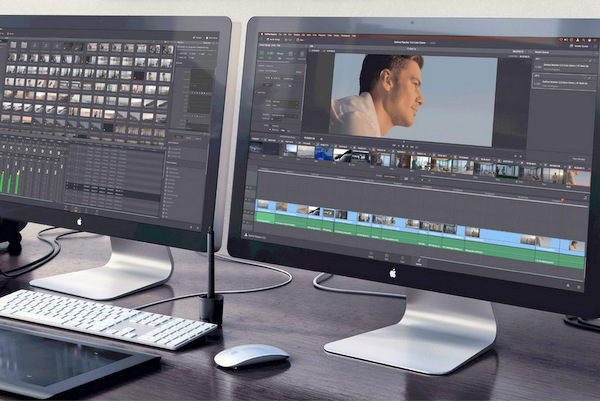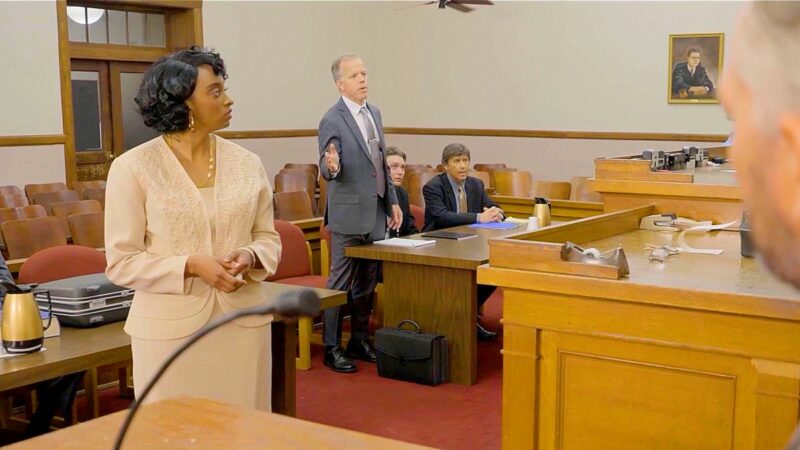![]() by Andrew Cant – Facebook | Twitter | Instagram
by Andrew Cant – Facebook | Twitter | Instagram

Welcome back, Cinematographers!
I was planning to discuss the basics of camera technology today, with a view to building a basic foundation of knowledge; but last week on the way to a TV studio, a Director and Editor friend of mine and I were discussing a subject that I thought I’d bring along here this week.
If you’re an indie film-maker you will almost certainly have heard, or even said, the dreaded words “we’ll do it in post”, usually justifying the statement as allowing you to save time and effort on set. Now, despite the fact that there are very valid reasons to put something into your film in post-production, recently it seems to have become a crutch for laziness. The growing dependence on the “do it in post” approach has been helped along with the improvement in software capability, reductions in software cost, and better computers with greater capability; and while 3D objects and composites are very definitely managed in post, many tasks that can quite easily be done in-camera are too easily deferred to the masters of the keyboard rather than the camera.
The particular conversation I had with my friend, Alasdair, was around the topic of recording formats. Now, bear with me here as the two aren’t necessarily obviously connected. Alasdair is a big fan of shooting in RAW format and despite the format being very storage-hungry, it does offer a huge amount of flexibility to modify the image in post-production.
For those of you who are new to recording formats, RAW is generated by basically taking a bit-stream directly from the sensor output and bypassing the Digital Signal Processor (DSP) in the camera altogether. It’s very broad (being a 16-bit format) and holds all the sensor information captured. Settings that are usually managed in the DSP, such as white balance and ISO are not embedded into the RAW format so there is a lot of scope for dramatically altering the finished product. As you can imagine, a Director or an Editor (and especially a Colourist) would love this flexibility, so Alasdair being both a Director and Editor is very pro-RAW. I can see the appeal from his perspective.
However, as a Cinematographer, I’m not a fan. When using RAW, I’m basically surrendering the majority of my creativity over colour, contrast and all the other visual elements of a shot apart from the shot composition itself. I’m taking all that carefully sculpted light and surrendering the mood and feel of what I decided to shoot to the Colourist to redesign. On very small shoots it may be that the Cinematographer is also the Editor and the Colourist, and so shooting in RAW might be a good idea so you can get in and out quickly, and then play with the look in the comfort of your editing room. If you’re on a very large shoot you probably have a couple of weeks to get to know the Colourist and to design LUTs with them, so you’re agreed on the look you’re going for. However, on mid-sized indie shoots, the chances are that the Cinematographer will never meet the Colourist, and if they do they will not likely have the time to agree on a colour scheme together; and this is where we lose control.
I accept that there is a need to tweak shots to ensure that each shot matches its bedfellow in order to give a consistent look to a scene, but to completely surrender our influence on the colour and therefore the mood of a scene, is to surrender one of the principle contributions a Cinematographer offers. We have so many tools at our disposal with choices of camera, lens, lights, gels, diffusion, etc. that we should aim to retain all that effort so that it survives to the finished master.
For me, ProRes 422HQ in 10-bit is an ideal format. Its medium-weight in file size, has enough depth to allow a tweak in post to colour match but bakes the colour into the format so you leave your stamp on the production. Besides, if you’re planning to submit to Amazon or Netflix, 422HQ is the desired format so you’re not going to want to go any lower than that. If you need a bit more flexibility you can still use a Log colour scheme over the top, which will still retain all the camera configuration.
RAW has almost become a badge of excellence among indie film-makers recently, and if you’re not shooting in RAW you’re somehow less of a film-maker. Of course, this is nonsense. Many cameras are RAW-capable these days, so spending a certain amount on a certain camera could never be a measure of excellence or competence. It all comes down to what’s right for your production. There are times when RAW is the format to use, and I’d say the one-man band shoots, or the multi-million dollar blockbusters are good examples. For the rest of us, I think there are better ways for us to retain our creativities. Of course, sometimes the Producer will insist on a particular format and after doing our best to put forward our view on the matter, we may have to surrender to the boss, but we shouldn’t roll over willingly. Fight for your right to retain your creative impression on a shoot; and to save your data storage facility from getting hammered at the same time.
I don’t claim to have all the answers but if I’ve caused you to pause for a moment and have a think about what recording format you will use for your next shoot and whether you should say “Don’t do it in post”, then I will rest a happy man. This is just one aspect of “doing it in post” but it’s the one that potentially affects us the most, and possibly without us realising it.
These are just my opinions and I’d love to hear your thoughts on the matter. Do you shoot in RAW? When do you choose to use it over other formats? Do you prefer to do it in post?
P.S – Alasdair maintains that were he not Directing and Editing, or if there was a chance he would not be party to the final edit/colour grade of the footage, he’d certainly step up and commit to make those decisions with the Cinematographer / DoP on set.
news
Richard Green Documentary, ‘I Know Catherine, The Log Lady’: Premiere in NYC, LA May 9th
Lynchian Doc I Know Catherine, The Log Lady Makes Hollywood Premiere 4/17, Rollout to Follow
In Camera by Naqqash Khlalid Launch on VOD April 29
Naqqash Khlalid’s Directs Nabhan Rizwan. In Camera stars an EE BAFTA Rising Star Award Nominee.




